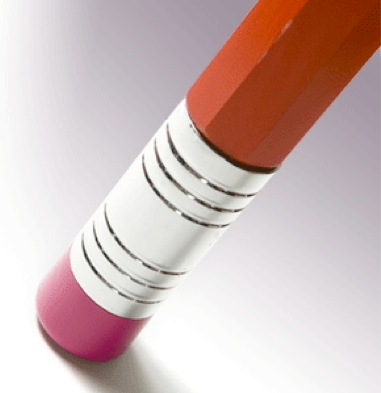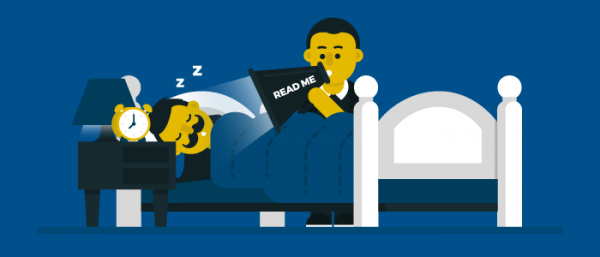
This publisher’s “winning” landing page copywriting routinely generates 50 percent more sales than the “losing” titles

It was enough to make an experienced copywriter groan…
Here’s the story, with a few minor details changed to protect the victor’s identity:
My publisher friend is a fervent believer in creating A/B splits for his landing pages, focusing specifically on the titles of his paid handbooks. The graphic design of each cover is identical in color, typeface and size. His sales letter landing pages use the exact same persuasive editorial copy except for the title of the book.
All possible steps are taken to ensure a fair test. The architecture of his Mequoda System offers up one of the two alternating landing pages equally to thousands of visitors.
The key metric is number of handbooks sold, not arrivals. A potential customer who abandons the order flow is not counted in the “win” column.
The results of these A/B splits are always decisive.
This publisher’s “winning” titles routinely generate 50 percent more sales than the “losing” titles. Occasionally, the winner outsells the loser even more dramatically.
Can you guess the results of this landing page copywriting test?
Which handbook title generated more orders?
(A) The Ultimate Alaska Fly Fishing Vacation Handbook: 21 ways to save on the ultimate Alaska fly fishing vacation
versus
(B) Deluxe Fly Fishing Vacations for Less – Alaska Edition: 21 ways to save on the ultimate Alaska fly fishing vacation
Now, before I reveal the winner, please note that it outsold the alternate title by nearly 200 percent — a very wide margin. That means it sold 480 handbooks vs. 160 handbooks. Ca-Ching!
B. Deluxe Fly Fishing Vacations for Less – Alaska Edition: 21 ways to save on the ultimate Alaska fly fishing vacation is the winning handbook title, even though The Ultimate Alaska Fly Fishing Vacation Handbook: 21 ways to save on the ultimate Alaska fly fishing vacation, with its rich, contiguous keyword phrases, works better for search engine optimization.
The results of this test are not merely anecdotal. This publisher has repeated his results in other A/B splits. The “cuter,” folksy, more alliterative handbook title has beaten the straight up handbook title every time.
To put it mildly, I was surprised. But I also wasn’t.
The lesson: The customer doesn’t necessarily search for the title phrase. But he often responds better to the “catchy” title. It’s why we optimize our free handbooks for search and the customer, while we recommend optimizing paid handbooks only for the customer.
Landing Page Optimization: The value of A/B split testing for increasing response
When writing titles for paid products, write a title that leads with the main benefit, even if the benefit doesn’t have a keyword phrase in it.
When writing headlines, generally you can use more words. Move the benefit from the subhead; put it in the main headline. Use the popular SEO keyword phrase in the subhead, not the main head.
Or put the benefit before the colon, and place the product name or title after the colon.
For example:
(A) Famous angler reveals little-known rivers, streams and lakes that are teeming with fish: The Ultimate Fly Fishing Vacation Guide
versus
(B) The Ultimate Fly Fishing Vacation Guide: Famous angler reveals little-known rivers, streams and lakes that are teeming with fish
In this example, I now predict the first headline (A) would probably pull better than the second (B). But only an A/B split test will determine for certain if I’m right.
Long headlines work best. Your objective should be to get both the benefit and the keyword phrase in the headline. And this tactic is even more important when promoting a paid product than a free download.
A/B split testing on your landing pages for any product is a powerful technique for revealing hidden persuaders and ending needless disagreements among copywriters. Measurement trumps argument.
Our conclusion is that all tested copywriting strategies work some of the time. But none of them work all of the time.
Your thoughts? Does this copywriting technique resonate with you?
Please join the discussion below on how to write and test effective titles and headlines for your landing pages.



Hi there Don and Kim,
My name’s Meredith Carson. I’m in the research and planning stages of developing and launching a self-funded digital publication here in the Middle East and North African region, in Arabic and English.
I would like to learn more about your services and to see if there’s the compatibility and feasibility to work together, moving forward. I’m definitely keen on learning more about Haven Nexus. An initial question would be: Can Haven Nexus serve the needs of right to left text i.e.: Arabic?
Thanks and kind regards,
Meredith Carson.
I will immediately clutch your rss feed as I can not to find your email subscription link or newsletter service. Do you have any? Please let me realize so that I may just subscribe. Thanks.
I see you’ve never actually worked at a major ad’ agency then judging by what you think about copywriting
@ Aartjan – The title test was done with an A/B email split to their email subscriber file. Unfortunately I can’t divulge who our client is. 🙂
Amanda, I just posted a blogpost discussing your Alaska fly fishing handboek landing page. Warning: it’s in Dutch :o) http://www.webanalisten.nl/analyse/seo-copywriting-kost-conversie.htm
One of the readers is wondering whether the landing page was used in an AdWords or e-mail campaign?
Did you also A/B-test organic search engine traffic to this page? If so, what are the conversion results?
By the way: if your client allows it, it would be great if you shared the landingpage URLs!
Great online copywriting post. I love the fact that you are sharing your best practice based on conversion rate. Nice work, thanks!
Great article.
It’s important to point out that title B (from the first set) included the words, “for Less” which implies the promise of a benefit earlier than the first title. That’s then reinforced by using the word “save”. For me that made it the obvious pick. (I had a 50-50 shot right?)
It’s always surprised by testing though. The challenge is in trying to determine the patterns and repeat/predict future results.